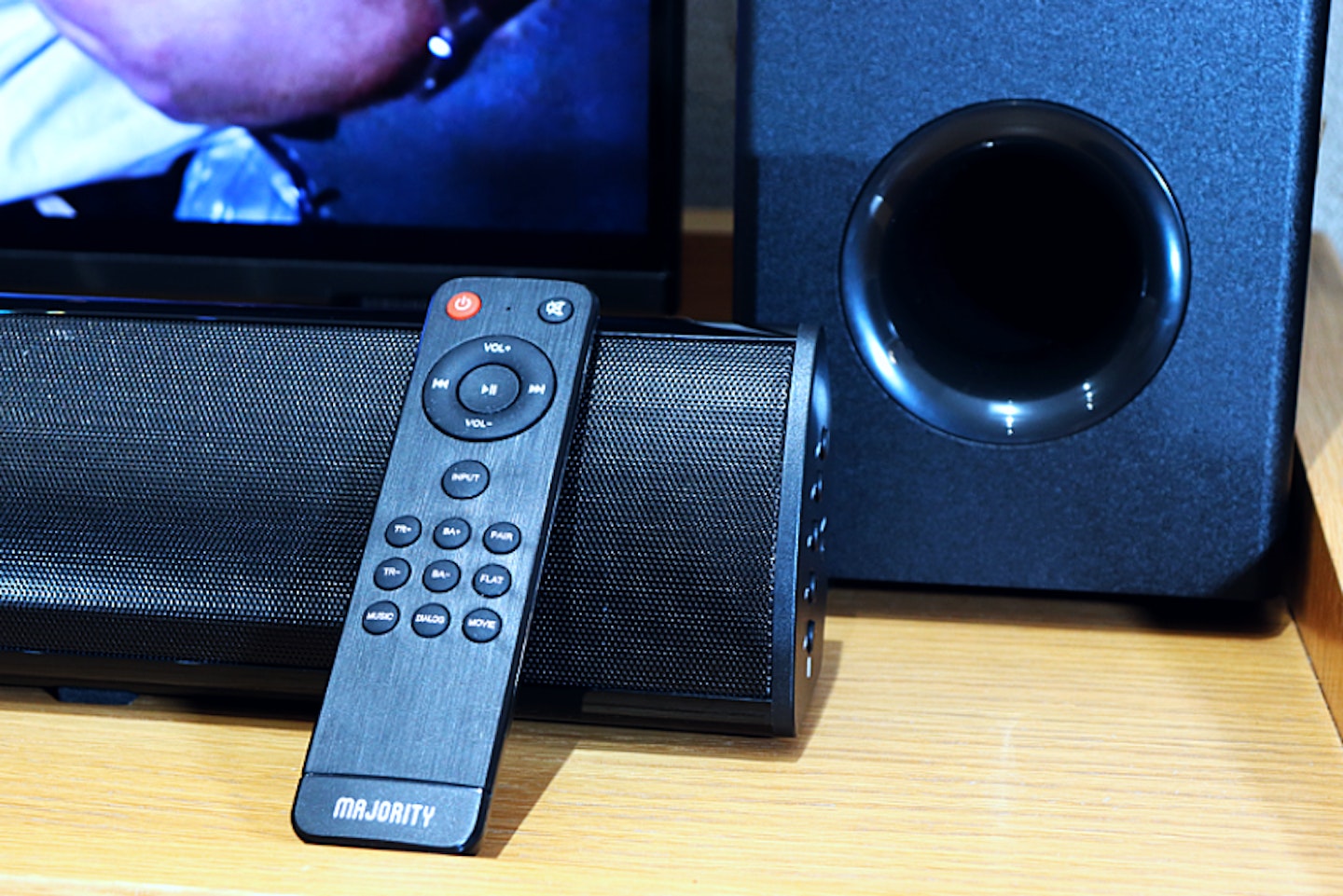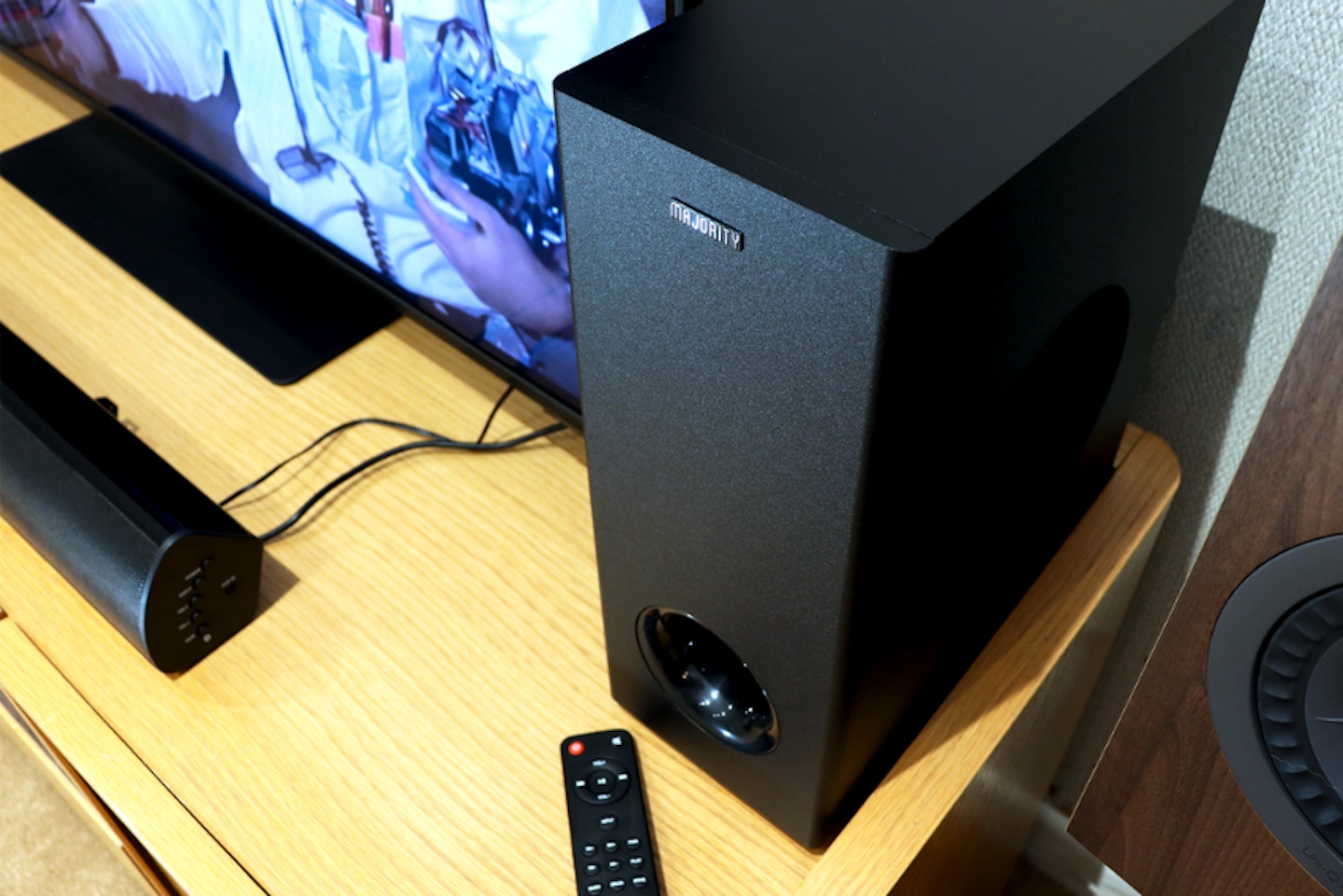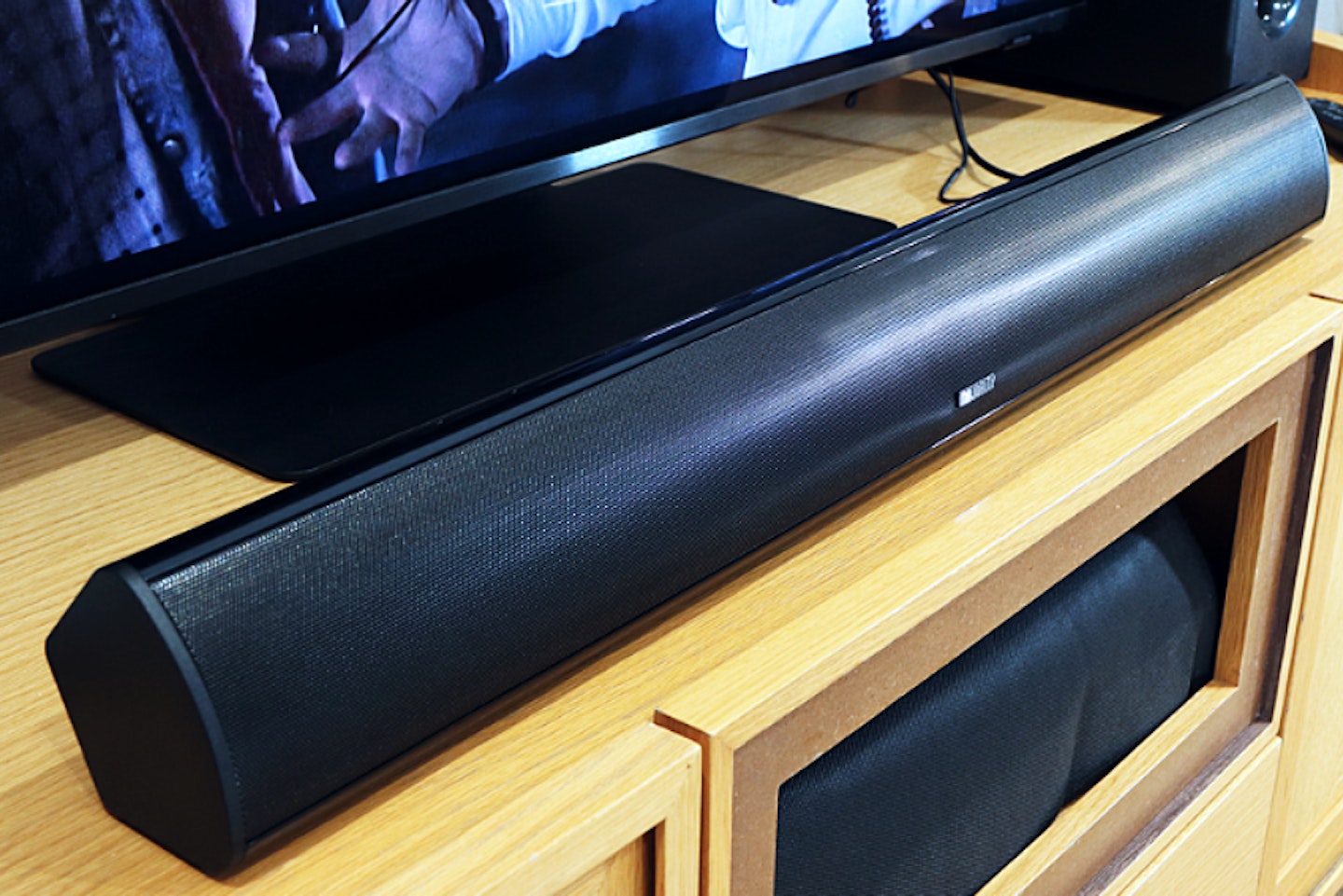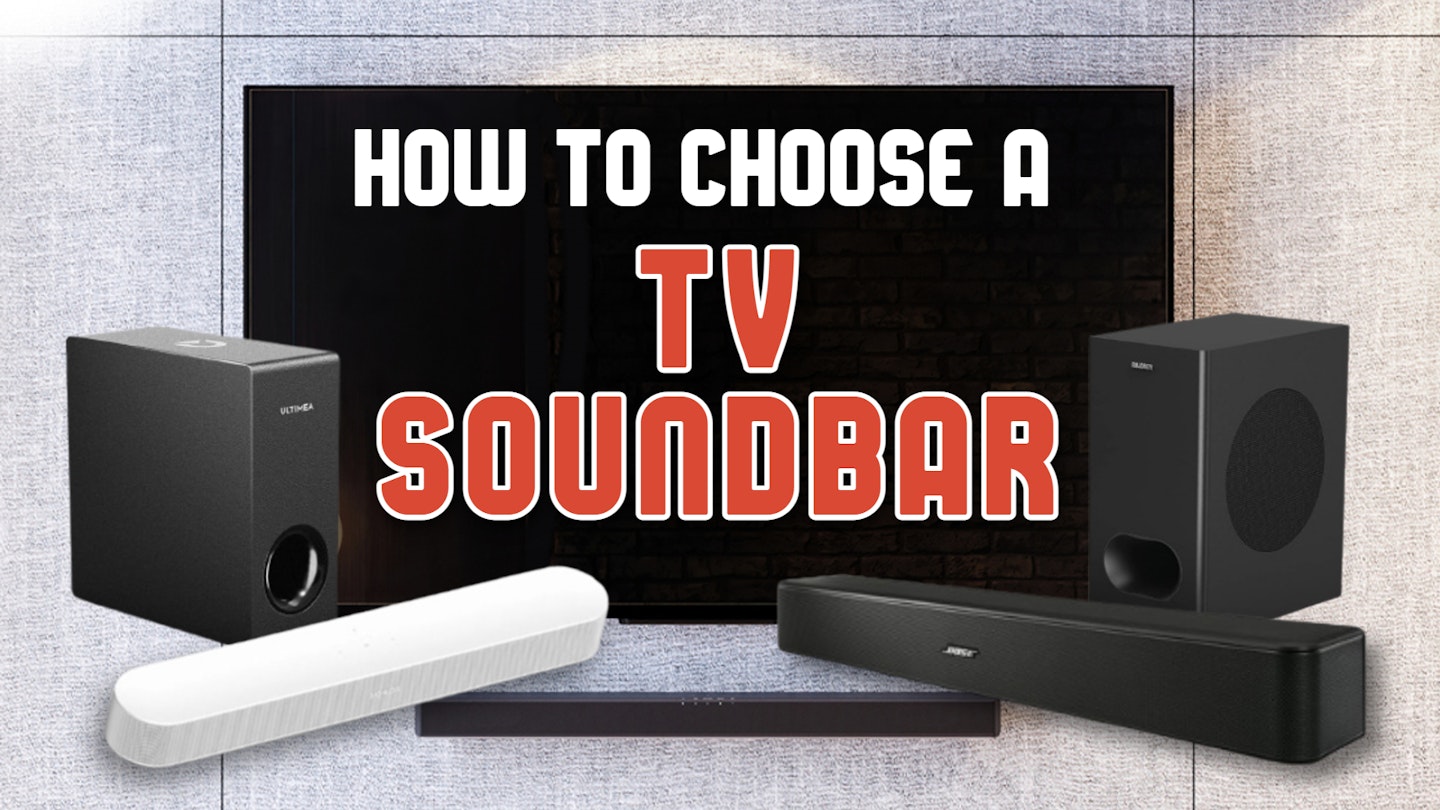They may be thin, light and smart, but the one thing that most modern TVs can’t lay claim to is excellent speakers. If you’re lucky, your current TV might have passable sound - that is until you crank up the volume for that Friday night movie or Netflix binge. Instead of feeling the thud of each punch or rumble of every explosion, you’re treated to a distorted rasp and tinny bass. Yes, those thin TVs also have thin speakers inside - and that’s a problem. But finding out how to choose a TV soundbar is the answer.
Thankfully, quality TV soundbars come in several varieties from enough brands to suit all budgets and needs. That means you can instantly upgrade your existing TV and gain some extra functionality in the bargain. But, how do you go about choosing the right one for you?

The benefits of a soundbar
Understanding what a decent soundbar can bring to your home is a great starting point. It’ll help you narrow down the features that are most important to you before you buy.
Sound quality
The obvious major benefit is improved sound quality. But that’s actually not that difficult a feat. Yes, you could just hook up your TV to an amplifier and some good TV speakers. That will be an improvement over the TV’s internal sound - but it’s not the best. A hi-fi amp and normal stereo speakers aren’t engineered for things like clear dialogue and a subwoofer for enhanced bass.
A soundbar, even one with only two channels, is designed to handle the range of audio that TV shows and movies deliver. An effective soundbar will have the drivers inside to deliver a full range of frequencies to suit the content. And that means a better experience.
Enhanced speaker setup
You may have heard of various home cinema audio setups that deliver a more immersive experience - such as 5.1 and 7.1 speaker systems. These are a step up from normal 2:1 sound (2 being a left and a right channel, and the 1 being a subwoofer). Sometimes two channels can be delivered over more than two speakers to huge effect - much like the Denon DHT-S216 soundbar we reviewed. So don’t be put off by a 2.1-based soundbar.
The combination of more speakers (such as seven spread around the room plus a subwoofer for 7.1 sound) makes for more immersion. Thankfully, you can buy soundbars that incorporate multiple directional speakers that create the effect of having separate speakers dotted around your room. Many also come with a separate dedicated subwoofer for those extra deep bass tones.
Better surround sound formats
But, a soundbar that also supports DTS, THX, Dolby Digital and others is where the magic really begins. Those are methods of encoding and decoding (AKA 'codecs') that deliver that surround sound intelligently to your soundbar’s array of speakers. That means that dialogue can come from the right general direction to match the visuals, And anything to the side or behind the viewer is also directed to the right place thanks to some impressive directional speaker tech.
Spatial audio
But the icing on the audio-visual cake is spatial audio, such as Dolby Atmos. Think of it as audio with a 3D component. Dolby Atmos and DTS

How to choose a TV soundbar
Match the size of the soundbar to the TV
Although it’s tempting to go for the largest and most capable soundbar you can lay your hands on, it needs to sit in harmony with your TV. If your TV is a 65-inch model, your soundbar’s front-firing speakers will need to make sense with whatever you’re watching. Too small a soundbar and everything from the left and right channels will sound like it’s coming from the middle of the screen.
In general, just because it looks neater, try to find a soundbar that’s about as wide as your TV. Whether you’re mounting them on the wall or standing them on a cabinet, it’ll make for a much more unified look. If your TV is much larger than 50 inches, you're fine with the largest soundbar you can get - even if it's not as wide as the TV.
Plan where the soundbar will be
Depending on your current TV setup, most soundbars are designed to sit close to your screen. So, measure up and make sure you have the space. Many soundbars also come with wall brackets so that you can mount them beneath the TV. Also, wherever you’re putting the soundbar, plan for your cables. You’ll obviously need power, but you may also need to connect other devices to a soundbar with its own inputs - more on that later.
Many soundbars come equipped with side and even upward-firing speaker arrays. So, it’s normally recommended that you allow enough space for them to work at their best. Clearly, having it placed inside a cabinet or with furniture in front or close to the sides isn’t recommended.
And don’t forget the subwoofer. If your chosen soundbar comes with one, it might be attached to the bar with a wire. Others are connected wirelessly, essentially becoming a Bluetooth speaker. Either way, that subwoofer needs to be well-sited and unobstructed by furniture. Thankfully, the placement of subs is a lot more forgiving than ordinary speakers, so you’ll have more flexibility here.

Plan your soundbar connections
The good news is that connecting the soundbar to your TV is simple - it'll either be analogue or digital, depending on your TV's capabilities. If your TV only has analogue audio outputs (like red and white phono connectors) you can connect this to a compatible soundbar. But you won’t be getting anything other than analogue two-channel stereo out of it.
HDMI cables
By far the best option is a HDMI connection. Plan for at least one HDMI cable running from your soundbar, and perhaps leave some space so that you can plug other devices into the soundbar if needed.
Your TV might have an HDMI port with an Enhanced Audio Return Channel (also known as eARC). You might only have an ARC-compatible port. The Enhanced type supports more advanced spatial audio formats. Having an eARC port means your soundbar will plug right into it. Any sound for whatever is on-screen will be passed through to the soundbar. But, if your TV has an HDMI connection without eARC/ARC you’ll have to use an optical audio cable instead. It’s not as advanced but at least it’s digital.
If your soundbar has its own HDMI inputs, you could connect a games console or Blu-ray player to it. All visuals are passed through to the TV via a single HDMI cable. So, having the soundbar connected via HDMI to a TV with eARC is like a two-way street for sound and vision. It results in fewer trailing cables to the TV.
Other connection types
Lastly, many soundbars double up as capable speakers for music. Depending on the inputs on your model, those could be a standard analogue phono cable, 3.5 mm audio jack or optical audio cable. Bluetooth is obviously the cable and hassle-free option here, as long as your soundbar and playback device supports it.

How many audio channels do you need?
As mentioned, a soundbar with two channels and a sub can still sound very good - much like the Majority Teton Plus soundbar we reviewed. You can find excellent 2.1.2 sound bars too; That’s essentially a stereo soundbar with one subwoofer and the third number represents two more speakers. They're usually upward-firing to support spatial audio formats like Dolby Atmos.
But, if you have the budget, you’re much better off with at least a 5.1 soundbar. That means you’ll have a centre dialogue speaker, two front-firing left and right speakers and two side-firing surround speakers. The ‘1’ of the 5.1 is the subwoofer. We don’t recommend going for a soundbar without a sub - it’s an essential part of a truly cinematic experience.
Go for more channels and you could have a couple of upward-firing speakers that will sound amazing with Dolby or DTS 7.1 Surround Sound and overhead sound effects.
Are you ready for serious sound?
Hopefully, you’ve found this guide useful and you’re all set to give your TV a serious audio upgrade. If you’re new to the terminology attached to soundbars and surround sound systems, there’s a jargon buster below. But, thankfully, once you’ve chosen the soundbar for you, setting one up is actually very uncomplicated. You could be enjoying your movies and shows in an immersive soundscape within half an hour. In our book, that makes a great soundbar an equally worthwhile addition to any TV.
Top tips:
• Avoid passive soundbars unless you have an existing amp and speakers. As many of us are looking to get better sound with less fuss, we recommend an active soundbar. An active soundbar has its own built-in amplifier. Whereas, a passive soundbar (like normal floor-standing or bookshelf speakers) requires an AV amplifier to power it. Unless you already have an AV amp which can connect to a soundbar, avoid passive and go active.
• Bear in mind that to enjoy your new soundbar with spatial audio, or digital surround sound, whatever you’re watching (and the device delivering it) will also need to support those audio formats.

TV soundbars: Jargon buster
Audio channels
The number of audio channels a soundbar supports is normally expressed as a number. For instance:
2.1.2
5.1.2
7.1.2
The first number is the number of channels in the soundbar. The higher the number the more internal speakers there will be to deliver the sound. In a 5.1.2 soundbar, those five channels might be Front Left, Front Right, Rear surround Left and Right, and a Centre dialogue speaker.
The middle number, usually 1, is the subwoofer. Occasionally this might be internal, but the best soundbars have an external sub to deliver more power. The final number (not always present) is for the number of upward-firing speakers that work with spatial audio formats like Dolby Atmos. If you’d like to find out more, check out Samsung’s guide to soundbar channels.
ARC/eARC
HDMI ARC is a port type that supports two-way connections between a soundbar and a TV. ARC stands for Audio Return Channel. It allows audio data to be returned to the soundbar from whatever source the TV is displaying. And, the visuals from any input plugged into the soundbar are sent through to the TV. The ‘e’ of eARC stands for Enhanced. It works in the same way but supports higher-definition digital audio, including more spatial audio formats.
Spatial audio
DTS
Chris Duffill is a Tech Product Writer for What's The Best. His background includes writing, editorial, marketing, design, video production and photography.
He specialises in home entertainment and audiovisual tech, including speakers, amplifiers, turntables, streaming media players, and TVs. He is also one of our resident experts in computing (PCs, tablets, smartphones, smartwatches), DSLR photography and all kinds of digital cameras. He also writes about retro gaming, game consoles and various electronic gadgets. If it plugs in, lights up or makes a noise, he’ll write about it.
Subscribe to the What’s The Best Newsletter to keep up to date with more of the latest reviews and recommendations from the rest of the What’s The Best team.
